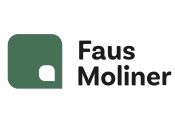Parallel imports of relabelled medical devices will be easier in the future
Judgement of the Court of Justice of the European Union (CJEU), of 17 May 2018, Junek v. Lohman, Case C-642/16
CAPSULAS Nº 191
The facts of the case
This case refers to the parallel import into Germany, by Junek, of medical devices that Lohman had previously placed in the Austrian market. In order to do so, Junek had affixed a small label on the box of the product. This label included only the following information: the name of the company responsible for the importation, its address and telephone number, a barcode, and a central pharmaceutical number which serves to organise the movement of products with the pharmacies. According to the Court, the label was attached neatly to an unprinted part of the box and did not conceal the trademark of Lohmann.
Junek, prior to importing the product into Germany, did not give notice to Lohman, nor did it supply Lohman with the modified packaging of the product with the label affixed. Lohman claimed that, because of this, Junek had infringed Lohman’s trademark since it had not respected the criteria that the jurisprudence of the CJUE had established for parallel imports of repackaged medicinal products.
Relabelling and repackaging
In Europe, when discussing parallel trade of medicines, the relabeling and repackaging of such medicines have been a hot topic for years. In 1996, the CJUE established that repackaging the product should only be accepted by the trademark owner if the parallel importer could show that relabeling it was not enough to place the product in the destination market. In 2007, in the Boehringer case, the CJUE ruled that repackaging would not be a trademark infringement provided that 5 conditions were met. Among these, the parallel trader had to notify the trade mark owner before the repackaged product was put on sale and, upon request, provide such owner with a sample of the repackaged product. The Court, in 2007 further said that affixing a label to the packaging of a medicinal product was not just relabeling but also repackaging when the package of the product is altered. In the 2007 cases, the packaging was altered because the parallel importer, in addition to affixing an external label, opened the original packaging in order to insert an information leaflet in a language different from that of the country of origin of the product.
In this case, the Court notes that the packaging of Lohman’s product had not been modified, and that the only alteration from the original presentation was the attachment of a small label that did not conceal the trademark of Lohman, and that included the information that we have mentioned above. This, according to the Court, could not be considered to be repackaging, but just as a mere relabeling and, therefore, Junek did not need to give notice to Lohman nor provide it with a sample of the relabeled product. Thus, considering the circumstances, Lohman could not oppose to the parallel trade.
The Court shows once more sympathy to those who wish to take full advantage of the EU rules on free movement, but the ruling is very much influenced by the fact that Junek’s label was a neat and small one, that did not affect neither the quality nor the image of the product. Furthermore, the Court gives a lot of value to the fact that Junek’s label did not generate confusion as to the origin of the product.
